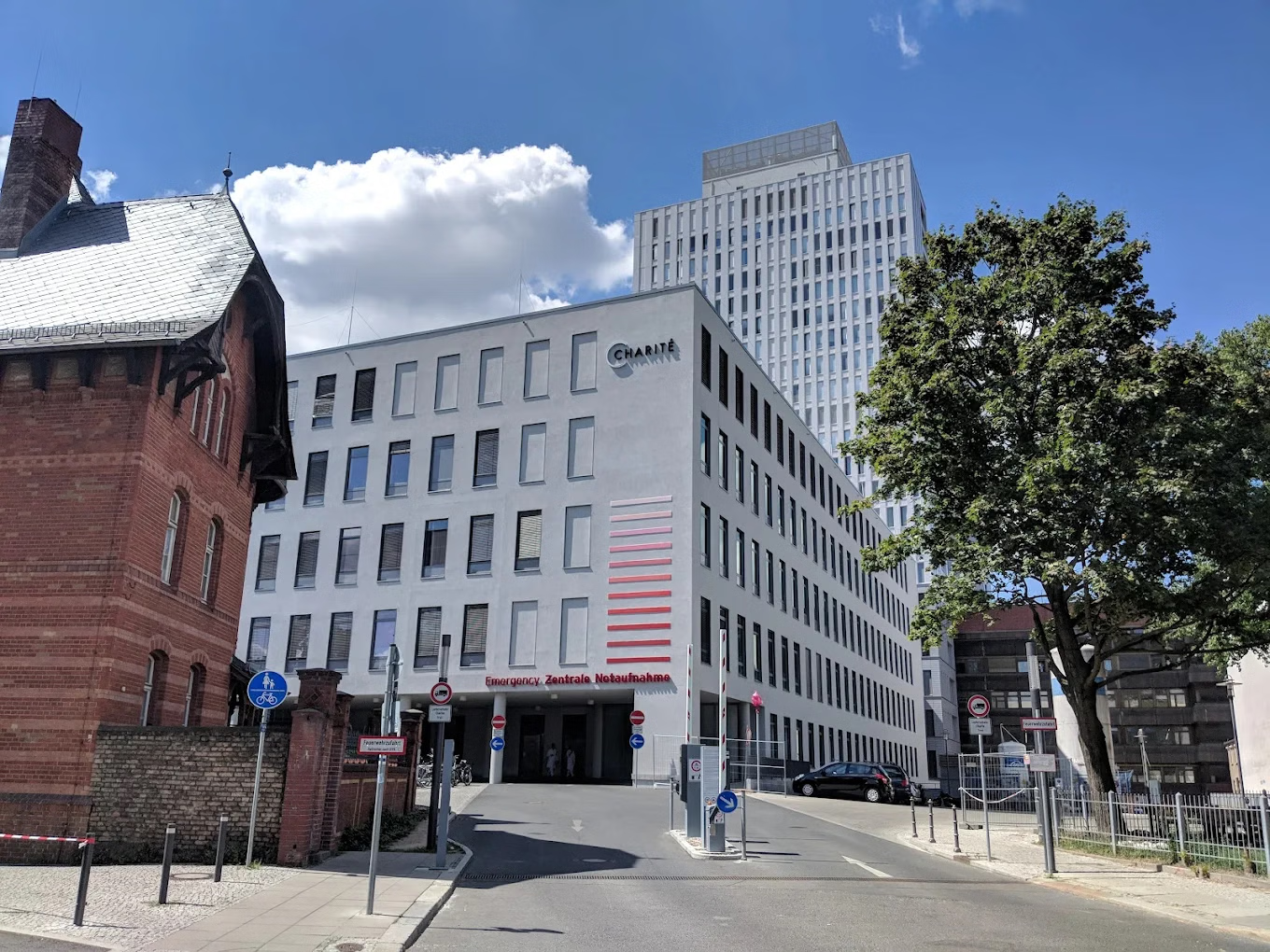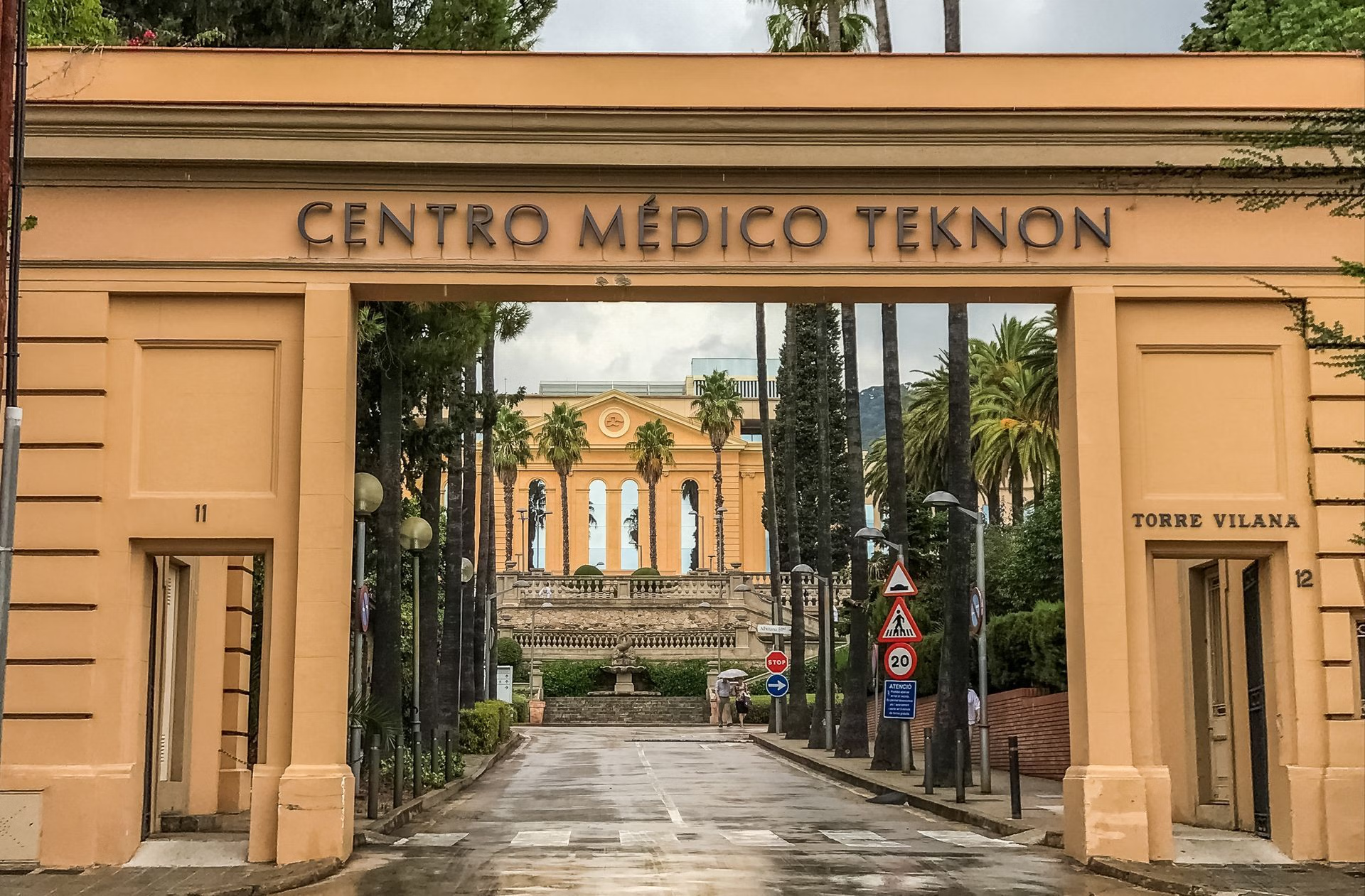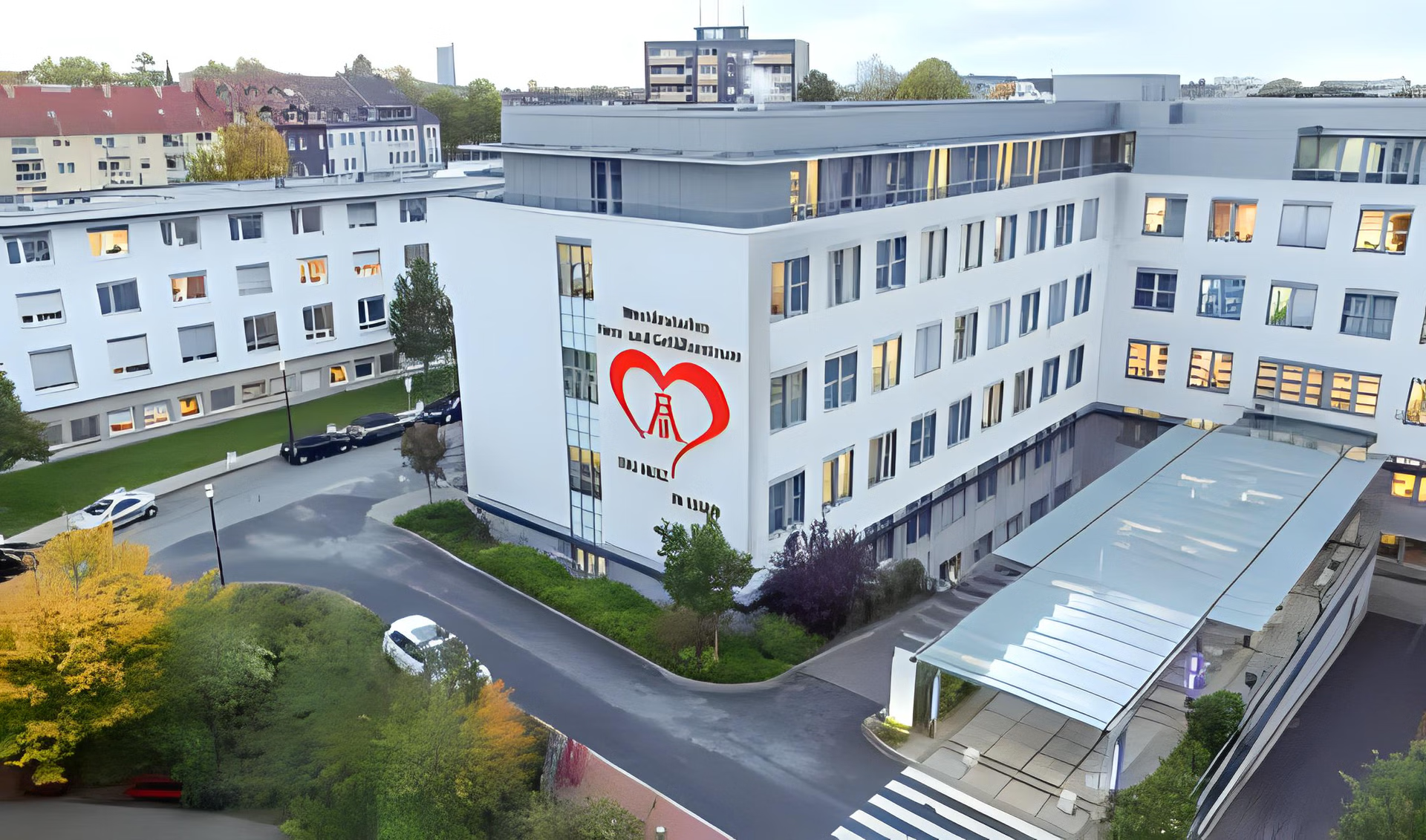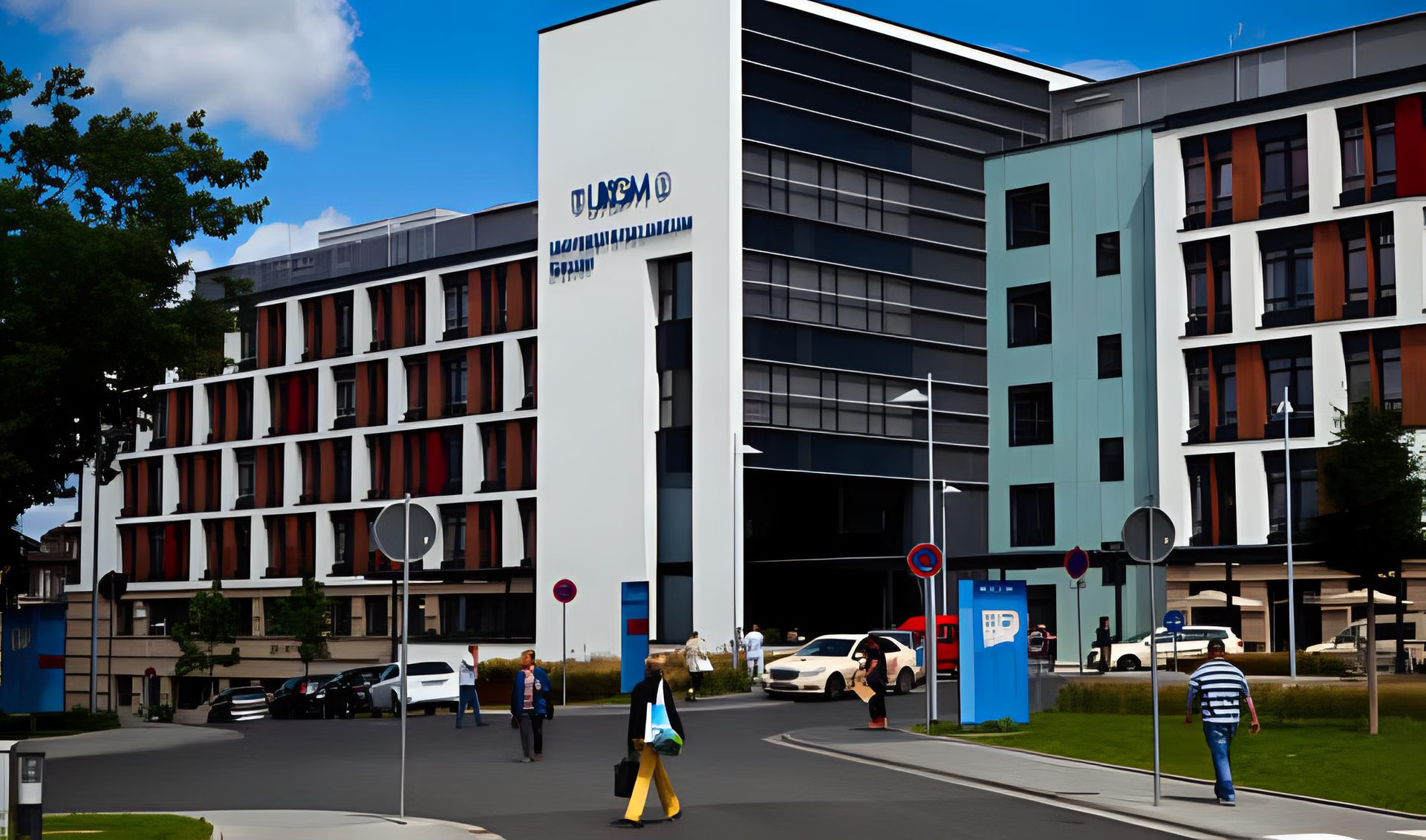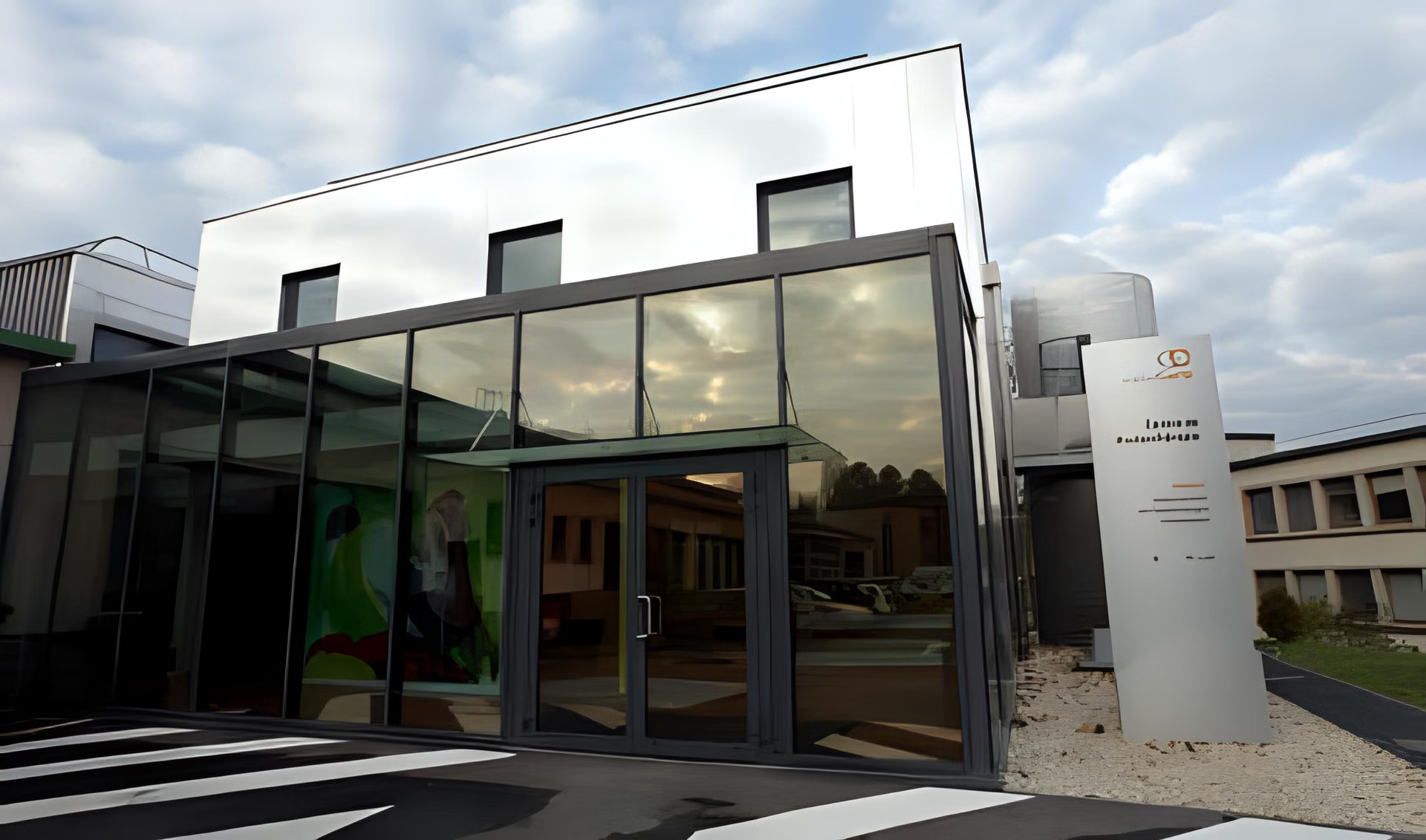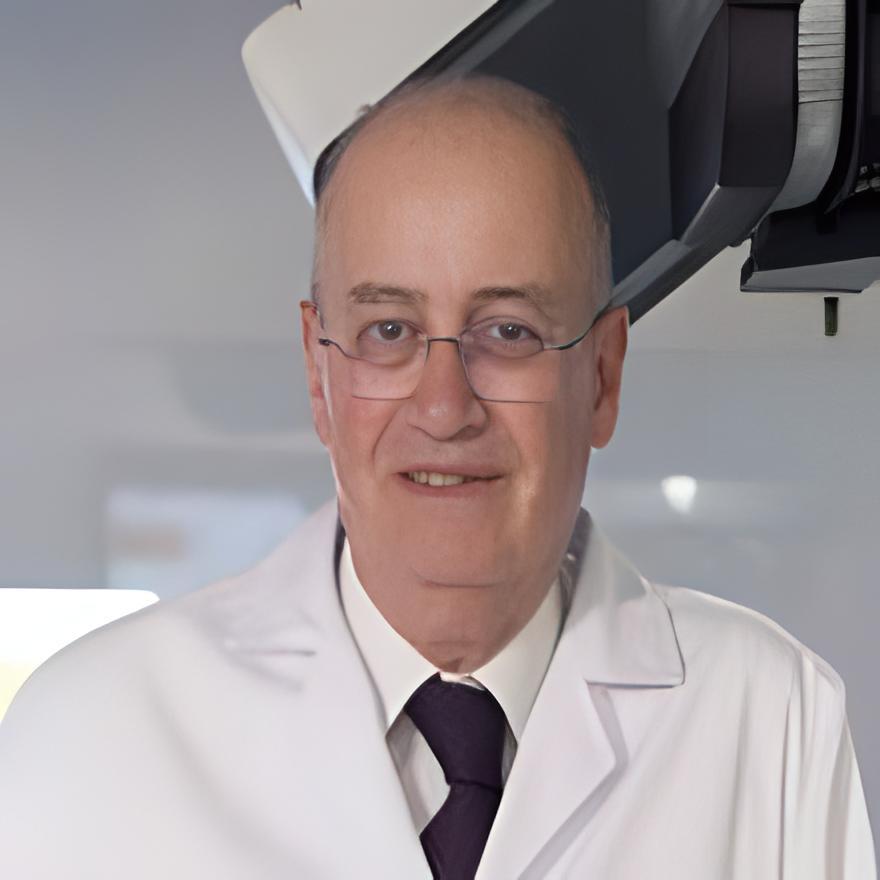Proton Therapy for Liver Cancer Treatment

Due to the studies, proton therapy for liver cancer helps to free from cancer 46% of people after 3 years.
Up to 60% less radiation is sent to the tissues around the tumor because of this treatment.
Proton therapy patients had a 31-month survival rate, compared to 14 months for radiation therapy patients.
PBT had a local control rate of 66% at 2 years and 53% at 5 years in liver metastases patients.
 What is proton therapy for liver cancer?
What is proton therapy for liver cancer?
Proton therapy (PBT) is a radiation therapy that uses the energy of protons to destroy cancer cells. It is a popular newer technology because of its efficiency and safety. PBT can deliver high doses of radiation to the tumor and, at the same time, minimizes damage to surrounding healthy tissues.
Can proton therapy be used for liver cancer?
If you are looking for the answer, we can say generally yes. PBT is a safe and effective treatment option, especially for patients who may not be suitable for traditional surgery, chemotherapy, or radiation therapy for different reasons.
It's important to remember that the decision to use PBT should be made on a case-by-case basis, connecting with the specifics of the tumor and the patient's overall health.
 How does proton therapy work for liver cancer?
How does proton therapy work for liver cancer?
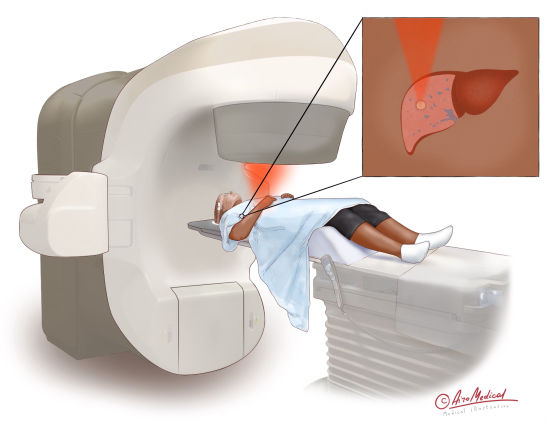 Proton radiation therapy is a cutting-edge treatment. The usefulness of PBT is that the liver is a critical organ highly sensitive to radiation and cannot tolerate high doses.
Proton radiation therapy is a cutting-edge treatment. The usefulness of PBT is that the liver is a critical organ highly sensitive to radiation and cannot tolerate high doses.
Protons are accelerated to high speeds using a synchrotron or cyclotron machine, generating high energy. This high energy allows the protons to penetrate the intended depth within the body. Once they have reached the targeted location, the protons deliver a precise dose of radiation to the tumor.
The proton beams are delivered to the tumor from different angles, allowing for more precise targeting of the cancerous cells. This is because the protons put most of their energy at the site of the tumor, so there is less damage to the healthy tissue around it. PBT can also be combined with other cancer cures, such as chemotherapy or surgery. It helps to develop a comprehensive treatment plan that involves patients.
Traditional radiation therapy can damage healthy liver tissue, causing severe side effects and limiting the amount of radiation that can be safely used. Protons can be more precisely targeted to the tumor, sparing healthy liver tissue and reducing the side effects of proton therapy for liver cancer.
 Description of proton beam therapy for the liver
Description of proton beam therapy for the liver
Most of the time, proton therapy for liver cancer is done outside a hospital. Before it starts, a CT or MRI scan is done on the patient to determine where the tumor is. After the scan, the patient sits or lies in a device that keeps part of the body that will be treated from moving. Based on the scan, plans are made to send the proton beam to cancer. For each therapy session, the patient is put back in the device that keeps them from moving. Also, X-rays or scans are done before each session to ensure the patient is in the same position so that the protons hit the tumor and not the healthy tissue around it.
The proton beam can't be seen and doesn't hurt. The number of treatments depends on what kind of cancer is being treated and how far along it is. Therapy is usually done five days a week for 15 days. Sessions typically last between 15 and 30 minutes, focusing more power on the tumor with less radiation on the liver tissues around it.
The beam kills tumor cells layer by layer, saving the surrounding healthy liver cells.
 Who is the right candidate for proton therapy for liver cancer?
Who is the right candidate for proton therapy for liver cancer?
Indications
- Early-stage liver cancer: Proton radiation may be a good way to treat small local tumors without spreading, especially when surgery is not an option because the tumor is close to critical structures like large vessels.
- Large or oddly shaped tumors: Compared to traditional radiation therapy, protons may deliver a more accurate and effective radiation dose to large or oddly shaped lesions.
- Tumors that can not be treated by surgery or chemotherapy: Some people with liver cancer may be unable to handle surgery or chemotherapy for different reasons. In these situations, protons may be a suitable alternative.
- Keeping healthy liver tissue: Proton therapy for liver cancer is an excellent treatment because it can target the tumor while leaving healthy liver tissue undamaged. This is important for keeping the liver working.
- Treatment for recurrent liver cancer: For people who have had liver cancer before and it has returned, protons may be a good way to target the remaining cancer cells.
Whether proton therapy for stage 4 liver cancer help is often from our patients.
We will note that rarely proton therapy can treat liver cancer in advanced stages, but its use depends on several factors.
PBT is more commonly used for early-stage liver cancer. PBT is a localized treatment that targets a specific area and is typically used when the cancer is contained within the liver. In advanced stages of liver cancer, it may have spread beyond the liver to other organs, making it difficult to treat with localized therapy alone.
However, in some cases, PBT may be used as part of a comprehensive treatment plan for advanced liver cancer, primarily if the tumor is located in a sensitive area of the liver or adjacent to critical organs, such as the stomach, intestines, or lungs.
What about proton therapy for advanced liver cancer?
PBT can treat patients with advanced liver metastases when traditional radiation therapy is not feasible. There is strong evidence that high doses of radiation are required to achieve long-term control using proton therapy for liver metastases.
Studies have shown that PBT can safely achieve durable local control even among patients with larger liver metastases. For example, a study of 133 patients with liver metastases found that PBT delivered in 22 fractions achieved a local control rate of 66% at 2 years and 53% at 5 years. Proton therapy for metastatic liver cancer was well-tolerated and achieved good local control rates with minimal toxicity. Additionally, proton therapy's ability to be combined with other systemic and surgical methods can further enhance its effectiveness.
What centers are suitable for proton therapy for liver cancer?
 Benefits and risks of proton therapy for liver cancer
Benefits and risks of proton therapy for liver cancer
Advantages
PBT is better than regular radiation therapy in some ways, such as:
- Up to 60% less radiation is sent to the tissues around the tumor, so less damage is done to healthy tissues.
- It can make it possible to give the tumor a more potent dose of radiation, making it more likely that all tumor cells will be killed.
- Some side effects of proton therapy for liver cancer, such as low blood counts, fatigue, and nausea, may be milder during and after treatment.
- After treatment, people get better faster.
In addition, proton therapy for liver cancer offers the benefits of outpatient treatment, no recovery period, and the potential for combination with other systemic and surgical methods.
Side effects
PBT may also have limitations due to certain negative aspects associated with it, which can restrict its use:
- For proton beam therapy to work, you need expensive, specialized tools that are hard to find in medical centers.
- Standard radiation therapy might cost less than PBT, and some insurance companies might not cover it.
- PBT works best for cancer confined to one area with clear borders and not spread to other parts of the body. It might not be suitable for all types of cancer.
Who specializes in proton therapy for liver cancer?
 Results, stats and treatment prognosis
Results, stats and treatment prognosis
Liver and intrahepatic bile duct tumors are among the fastest-growing cancers. Still, unfortunately, many patients are not suitable candidates for surgical treatment due to various medical or anatomical reasons. This can lead to a relatively low 5-year overall survival rate of only 18%.
However, proton therapy for liver cancer is a promising treatment option for patients who cannot undergo surgery. A study by the Proton Collaborative Group showed that patients undergoing radiation therapy with a proton beam for a liver tumor had an overall survival rate of 71.5% and a survival rate without liver cancer progression of 67.3%. These promising results answer the question of how effective proton therapy is against liver cancer, especially considering the relatively poor prognosis of this type of cancer.
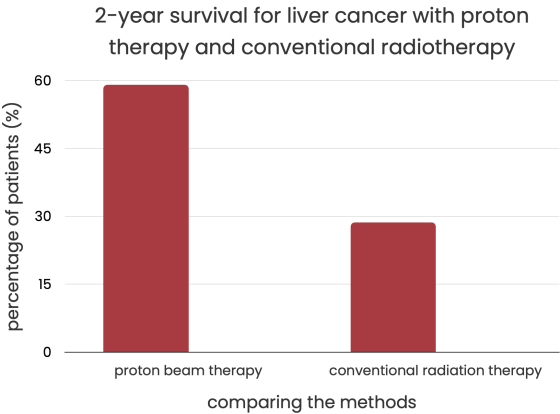
Moreover, the success rates for proton therapy for liver cancer and its long-term outcomes for patients treated with it have also been encouraging. Patients who received PBT showed an average total survival rate of 31 months, compared to 14 months for those who received traditional radiation therapy. Two years after treatment, the survival rate for proton therapy patients was 59%. At the same time, it was only 28.6% for those who received conventional radiotherapy.
These findings highlight the potential of proton radiation therapy as a valuable addition to the arsenal of treatments for liver cancer, especially for patients who are not surgical candidates. Additionally, proton therapy's ability to be combined with other systemic and surgical methods can further enhance its effectiveness.
 What can AiroMedical offer?
What can AiroMedical offer?
AiroMedical is an international portal helping to find a suitable treatment solution around the globe. We are not limited to certain healthcare providers and make own research to offer the best in each case. You will get the following searching for the liver cancer treatment with us:
- Quick and expert assistance: AiroMedical offers expert assistance at all process stages, with a 1-2 hours response time from the first contact to offer. It helps you quickly and easily get the help you need to find the most suitable healthcare solution for your treatment.
- Cost savings: we can help you save up to 30% from the final price of your proton therapy for liver cancer. By working with direct partners and analyzing multiple criteria, AiroMedical can offer reasonable prices for international patients.
- Door-to-door service: AiroMedical provides door-to-door service, including visa support, accommodation, transportation, translation, and follow-up care.
- Verified hospitals and doctors: AiroMedical selects healthcare providers based on internal analytics and multiple criteria, ensuring you receive high-quality care from proven doctors and reliable hospitals.
- Wide range of medical solutions: we collaborate with world-leading clinics and cover the whole range of specialties, from regular check-ups to experimental treatment within clinical trials. It means you can get the medical solution you need, regardless of your condition or requirements.
So why wait? Contact AiroMedical today and receive comprehensive support throughout your proton therapy journey, from first contact to follow-up care.
What countries can offer proton therapy for liver cancer?
References:
- Fukumitsu N, Okumura T, Takizawa D, et al. Proton beam therapy for metastatic liver tumors. Radiother Oncol 2015;117:322-7. 10.1016/j.radonc.2015.09.011
- Chuong M, Kaiser A, Molitoris J, Mendez Romero A, Apisarnthanarax S. Proton beam therapy for liver cancers. J Gastrointest Oncol. 2020 Feb; 11(1): 157–165. doi: 10.21037/jgo.2019.04.02.
- Liu H, Chang JY. Proton therapy in clinical practice. Chin J Cancer. 2011 May;30(5):315-26. doi: 10.5732/cjc.010.10529.
- Kim, J., & Jung, Y. (2017). Radiation-induced liver disease: current understanding and future perspectives. Exp Mol Med, 49(7), e359. doi: 10.1038/emm.2017.85.
- Jen-Yu Cheng, Chieh-Min Liu, Yu-Ming Wang, Hsuan-Chih Hsu, Eng-Yen Huang, Tzu-Ting Huang, Ching-Hsin Lee, Sheng-Ping Hung, and Bing-Shen Huang. "Proton versus photon radiotherapy for primary hepatocellular carcinoma: a propensity-matched analysis." Radiat Oncol 15 (2020): 159. doi: 10.1186/s13014-020-01605-4.
- Chuong, M. D., Kaiser, A., Khan, F., Parikh, P., Ben-Josef, E., Crane, C., ... Apisarnthanarax, S. (2019). Consensus Report From the Miami Liver Proton Therapy Conference. Frontiers in oncology, 9, 457. doi:10.3389/fonc.2019.00457.
